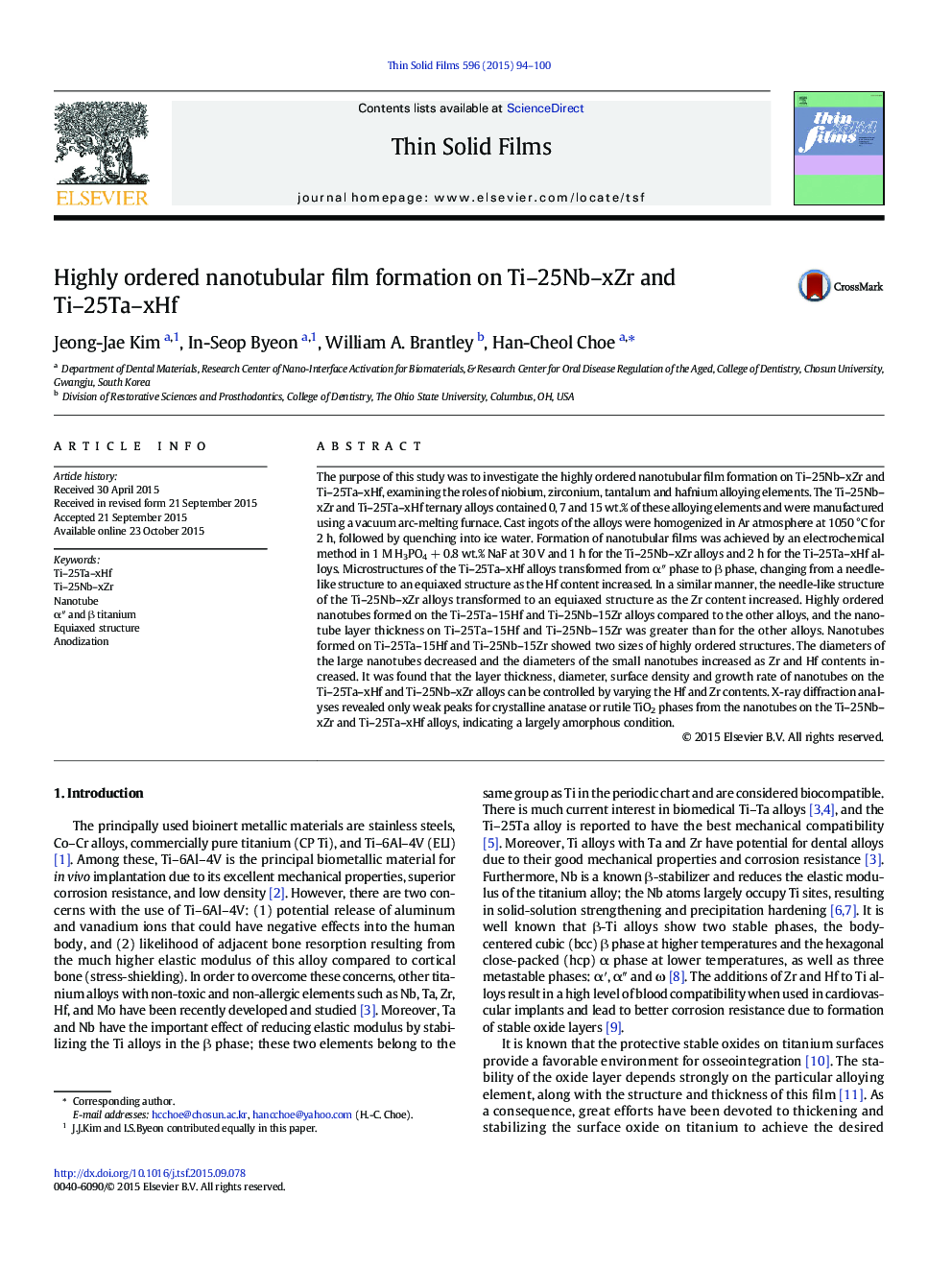| Article ID | Journal | Published Year | Pages | File Type |
|---|---|---|---|---|
| 1664512 | Thin Solid Films | 2015 | 7 Pages |
Abstract
The purpose of this study was to investigate the highly ordered nanotubular film formation on Ti-25Nb-xZr and Ti-25Ta-xHf, examining the roles of niobium, zirconium, tantalum and hafnium alloying elements. The Ti-25Nb-xZr and Ti-25Ta-xHf ternary alloys contained 0, 7 and 15 wt.% of these alloying elements and were manufactured using a vacuum arc-melting furnace. Cast ingots of the alloys were homogenized in Ar atmosphere at 1050 °C for 2 h, followed by quenching into ice water. Formation of nanotubular films was achieved by an electrochemical method in 1 M H3PO4 + 0.8 wt.% NaF at 30 V and 1 h for the Ti-25Nb-xZr alloys and 2 h for the Ti-25Ta-xHf alloys. Microstructures of the Ti-25Ta-xHf alloys transformed from αⳠphase to β phase, changing from a needle-like structure to an equiaxed structure as the Hf content increased. In a similar manner, the needle-like structure of the Ti-25Nb-xZr alloys transformed to an equiaxed structure as the Zr content increased. Highly ordered nanotubes formed on the Ti-25Ta-15Hf and Ti-25Nb-15Zr alloys compared to the other alloys, and the nanotube layer thickness on Ti-25Ta-15Hf and Ti-25Nb-15Zr was greater than for the other alloys. Nanotubes formed on Ti-25Ta-15Hf and Ti-25Nb-15Zr showed two sizes of highly ordered structures. The diameters of the large nanotubes decreased and the diameters of the small nanotubes increased as Zr and Hf contents increased. It was found that the layer thickness, diameter, surface density and growth rate of nanotubes on the Ti-25Ta-xHf and Ti-25Nb-xZr alloys can be controlled by varying the Hf and Zr contents. X-ray diffraction analyses revealed only weak peaks for crystalline anatase or rutile TiO2 phases from the nanotubes on the Ti-25Nb-xZr and Ti-25Ta-xHf alloys, indicating a largely amorphous condition.
Related Topics
Physical Sciences and Engineering
Materials Science
Nanotechnology
Authors
Jeong-Jae Kim, In-Seop Byeon, William A. Brantley, Han-Cheol Choe,
